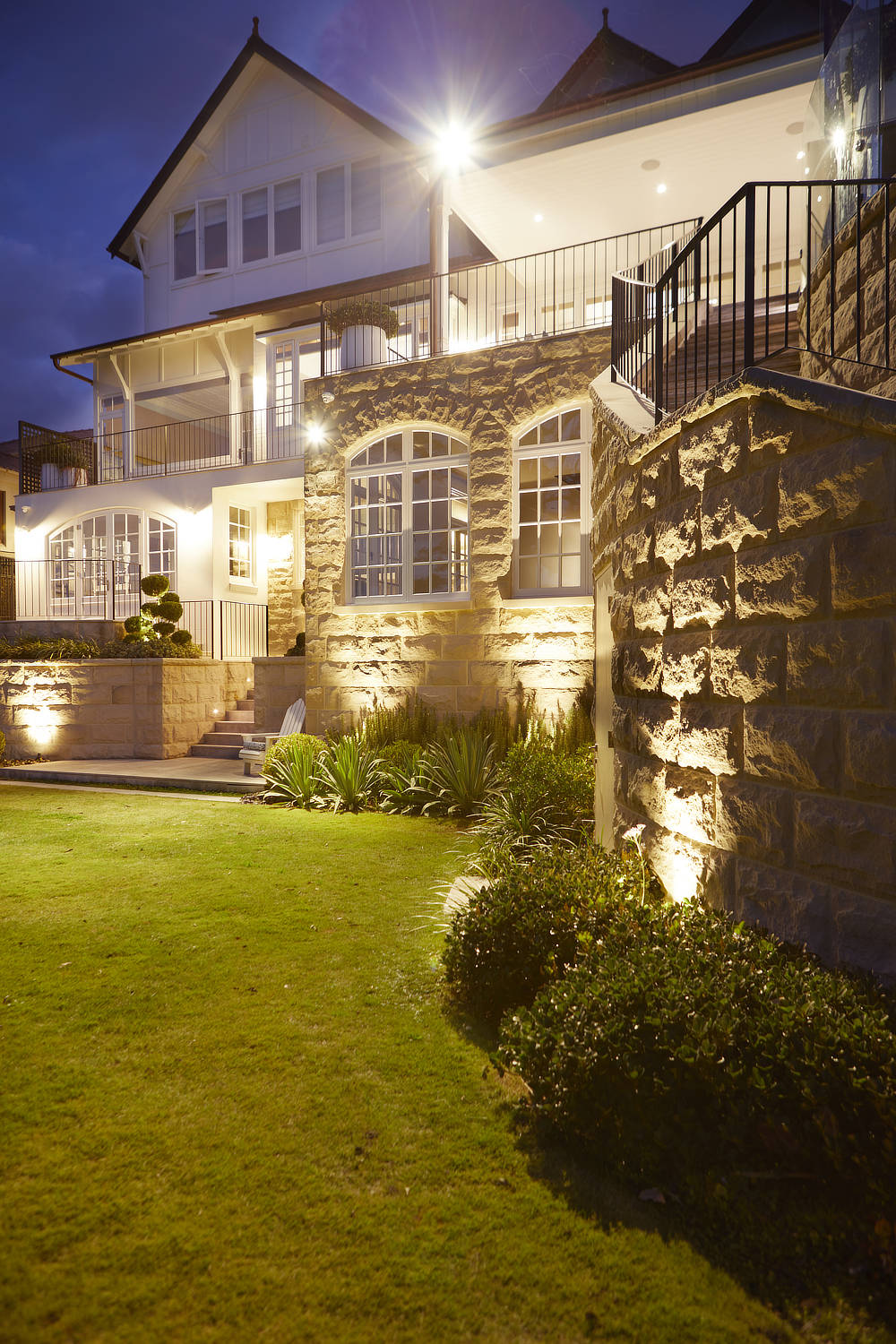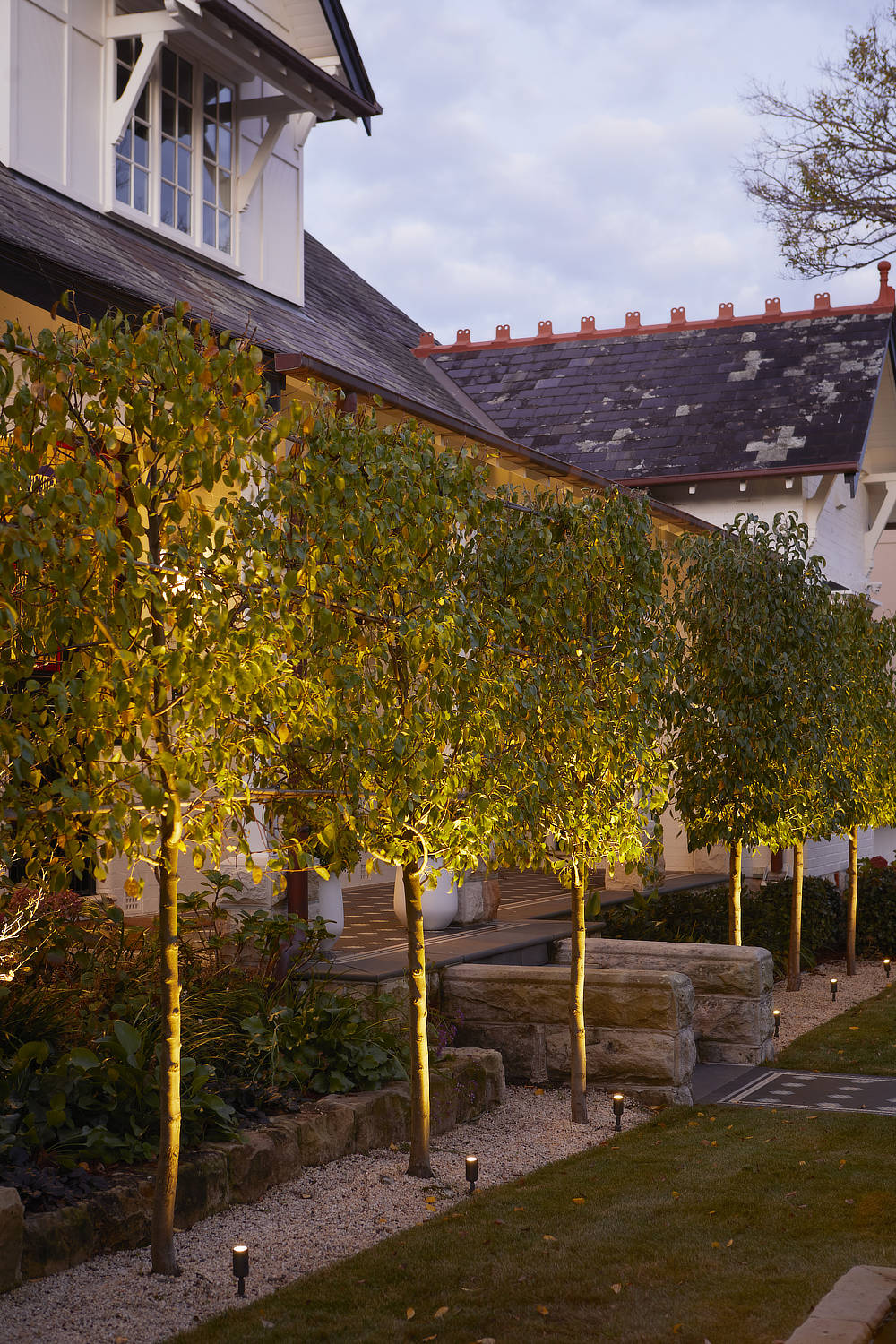Garden lighting is so often overlooked when planning a garden, a lot of people see the cost as something the basic garden can do without. In my opinion every garden needs some sort of lighting to make the most of the space at all hours. Good garden lighting adds atmosphere, creates a useable space when the sun sets but can also illuminate the garden so visually from the inside of the house it makes the garden feel assessable at all times, even in winter, which in turn makes a property feel much larger.
It’s hard to go past low voltage LED lighting systems as they are cheap to run, easy to install and safer around children and pets. You start with a transformer to lower the voltage from the house and then from there run a loop of larger cable around the perimeter of the garden. From this larger wire smaller cable can connect your lights to the power source. With modern technology simple plug and play systems are easy to use and perfect for small to medium sized gardens. I always go for a larger transformer than initially necessary, so you have the option of adding in more lights at a later date. For smaller gardens you can add in a transmitter to have a remote control on / off function and larger gardens can benefit from hooking the lighting up to a c-bus system or the like for ease of use.
Garden lighting can be one of two things – firstly for function, lighting up outdoor cooking areas, sensor lights for putting the rubbish out or for security reasons. Or lighting can be used to create a mood and drama to the space.
When lighting for the latter don’t think about the light think about the shadow and texture that light will bring. You know what your garden looks like in the light, don’t try and replicate that by flooding the garden in light, subtlety add in lights to bring on new and exciting textures. For example, elements like sculptural feature trees, walls of feature stone and other points of interest take on another dimension when up or down lit – you don’t see the whole object but more a glimpse, and its this that sets the tone.
Once you have your main features lit you will need to create some ambient light to support those features and remember too much can be too much and often less is definitely more. Wash light across larger items like hedges and pathways then add small candle like lights to densely planted garden beds. Again, the benefits of low voltage systems are you can always add more if you need it.
You also need to light your garden from the inside of your house. Looking out the window at night when its too cold to venture out and seeing your favourite tree will make the cooler months feel less claustrophobic and your property larger. Pick trees and features that line up with key windows in the house for the best effect.
When selecting your light fittings try to go for the best quality you can afford as lights have to withstand the harsh elements. Unless the light is a feature pendant or wall light, I try not to think about the appearance of the light itself as its more about the effect it gives. Something simple and streamlined will disappear into the garden during the day and (pardon the pun) shine at night.


